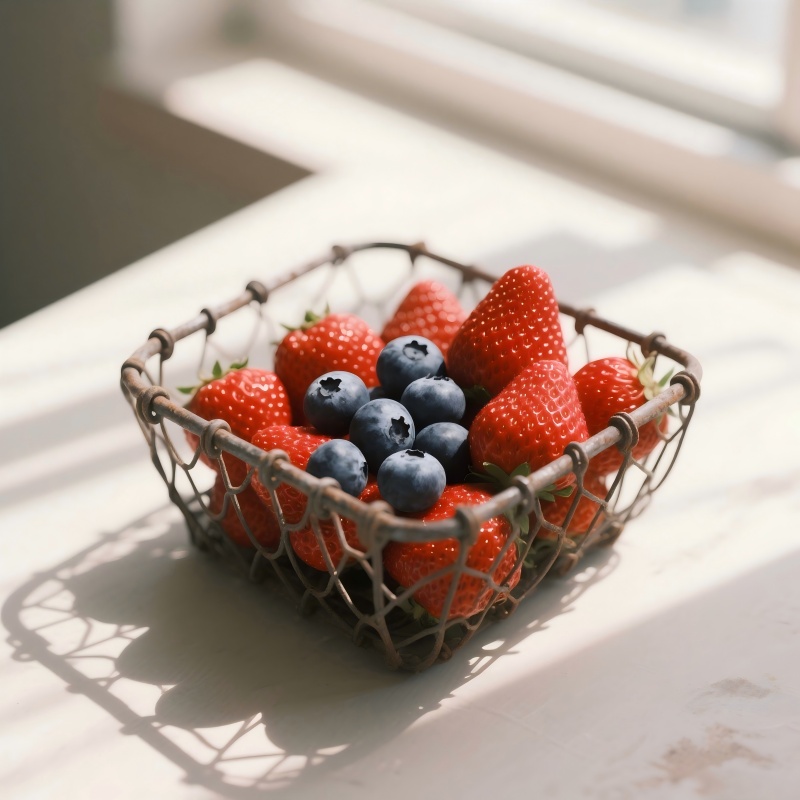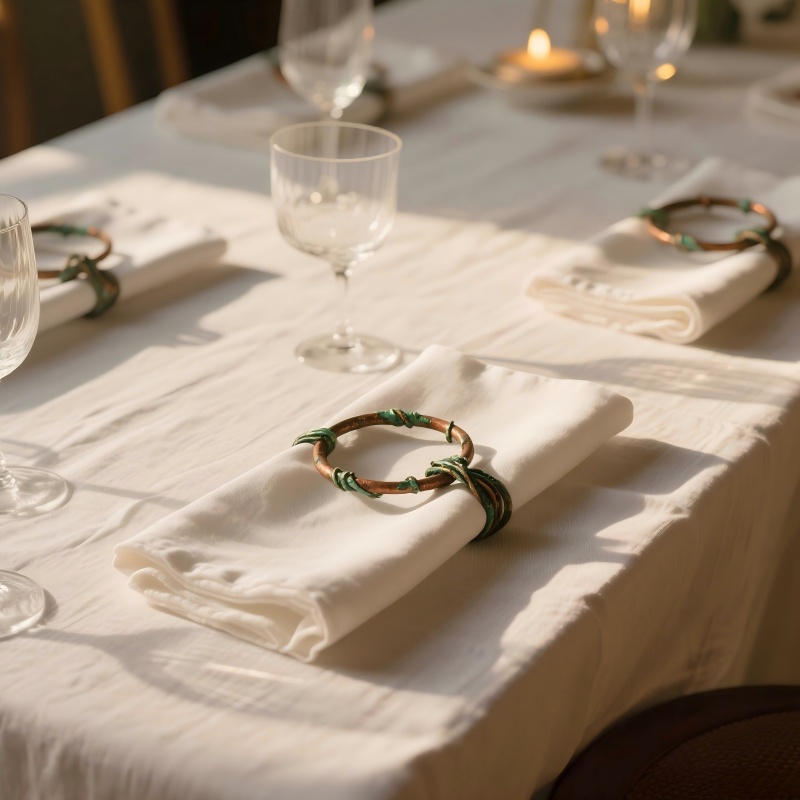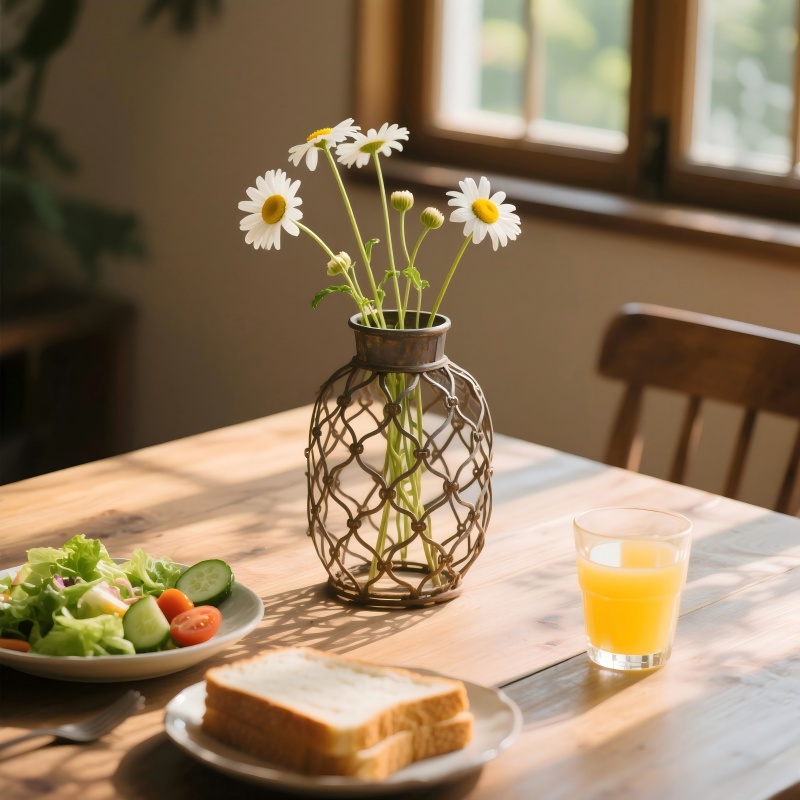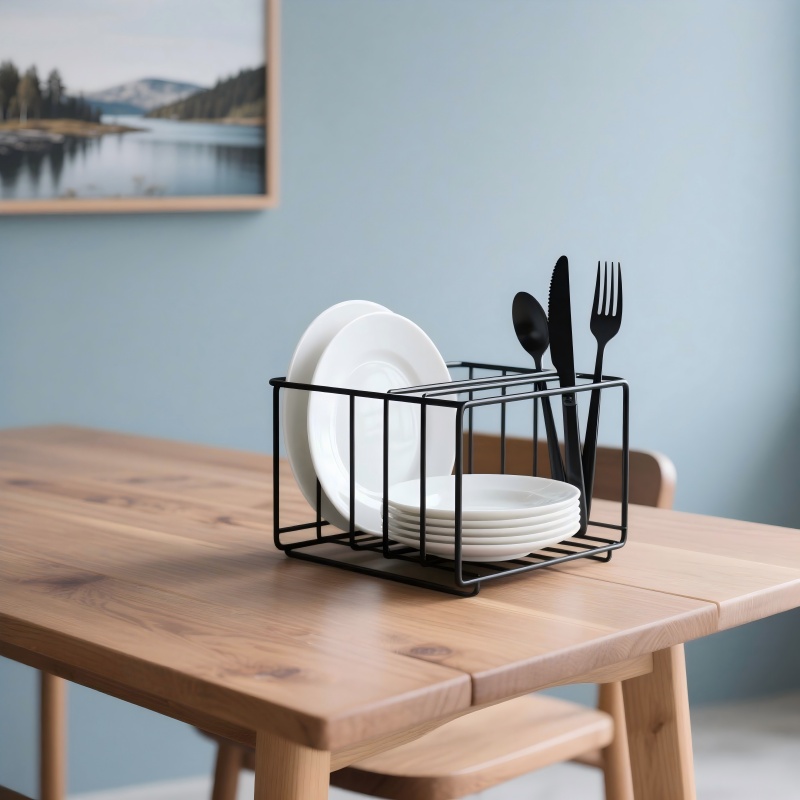The Table Aesthetics of Iron Wire Products: When Industrial Texture Meets the Warmth of Daily Life
The dining table at dusk always hides the wrinkles of life, and iron wire products, with their unique combination of rigidity and flexibility, quietly become a bridge connecting practicality and aesthetics. These utensils woven or forged from slender iron wires carry the distinctive coldness and transparency of metal. Amid the clinking of cutlery, they not only hold the warmth of food but also lay out a visually layered narrative for the table with their hollow rhythms.

1. Storage and Display: Transforming Table Order into a Visual Poem
The oval iron Wire Bread Basket on the breakfast table always shimmers in the morning light. The intersecting iron wire grid outlines the container's silhouette with mathematical precision, yet retains a unique texture due to the subtle differences in hand-forging. When it holds a freshly baked baguette, the golden brown of the bread forms a warm contrast with the matte black of the iron wires; when storing seasonal fruits, the round peaches and angular grid set off each other, resembling still lifes in a cubist painting. On the kitchen island, multi-tiered iron wire Spice Rack free up counter space with their vertical structure, and the cinnamon and chili powder in glass jars peek through the grid, turning the act of fetching ingredients during cooking into an interaction with light and shadow.
This philosophy of storage goes beyond function. Before the dinner begins, the host places the napkin rings -- those circles of copper and green wire -- on the linen napkins one by one, creating a marvelous tension between the metallic luster of the wire and the soft texture of the fabric. As guests took their seats, their fingertips touched the cool texture of the wire and subconsciously began to anticipate the meal.

2. Light and Shadow Magicians: Forging Emotional Filters for Dining Scenes
The romance of a candlelit dinner is often defined by tableware. An iron candlestick holds a candle with a spiral iron wire structure. When the flame ignites, light filters through the intersecting iron wires, projecting cobweb-like shadows on the wall that quiver with the dripping candle wax. This dynamic play of light and shadow instantly gives the modern dining table the mysterious charm of the Victorian era. Meanwhile, geometric iron wire chandeliers restructure the spatial atmosphere with their minimalist lines: a hexagonal frame cuts the light into regular spots, falling on the white tablecloth like scattered stars, adding an industrial aesthetic edge to a Japanese wabi-sabi style table.
Even for daily meals, iron wire products are quietly regulating the atmosphere. At lunchtime, the sunlight passes through the openwork pattern of the iron vase, casting fine shadows on the dining table, and the chamomile stalks inserted in the vase are intertwined with the lines of the iron wire, forming a visual game of reality and illusion. This ingenious idea of fusing natural elements with metal craftsmanship makes even a simple lunch an aesthetic experience of light and shadow.

2. Material Narrative: Reconstructing Table Culture Between Cold and Warm
The charm of Iron Wire products stems from the contradiction of their material—seemingly hard metal is woven into a flexible form, and the cold touch can convey warmth through the temperature of food. In the collision between tradition and modernity, they always find a unique balance: a vintage iron wire bread rack with rusty traces of time, when placed alongside a grandmother's bone china plate, creates a beautiful sense of time intersecting; while a minimalist iron wire placemat with a hollow grid design allows the texture of a wooden table to show through, interpreting the modern design philosophy of "less is more."
This material inclusiveness is even more reflected in the cross-cultural dining table scene. On the Southeast Asian style dining table, the copper-plated wire fruit plate holds the cut mango, and the warm color of the metal echoes with the bright yellow of the fruit; while in the cool color space of Scandinavian style, the matte black wire cutlery rack balances the warmth of the log dining table with its sharp lines. The wire products are like silent translators, transforming the food cultures of different regions into a common visual language.

When the last dish is cleared, the empty iron Wire Basket remains on the table, and moonlight filters through its grid to paint abstract patterns on the surface. These iron wire products have long transcended the category of utensils to become participants in the table's narrative—they store not only food but also fragments of life; they project not only light and shadow but also the host's aesthetic expression of life. In the interweaving of steel and tenderness, iron wire writes a gentle footnote for the modern dining table with its unique texture, amid the symphony of cutlery and plates.
